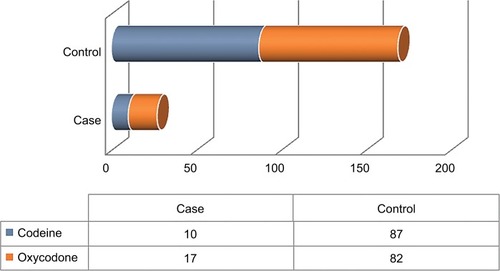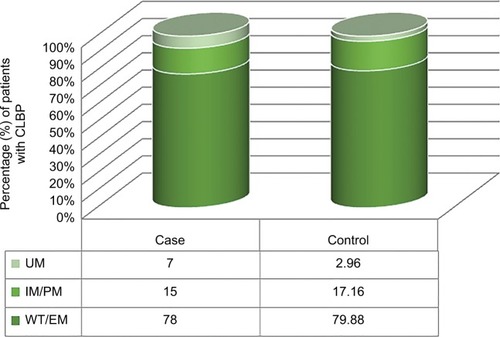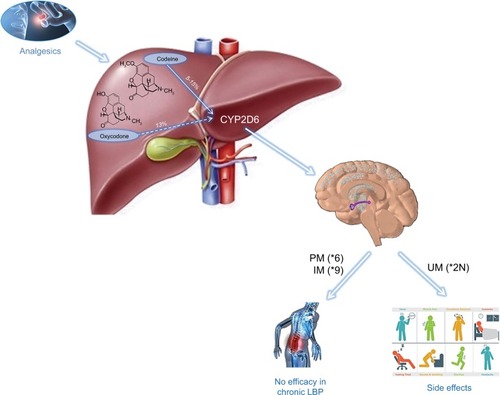Figures & data
Table 1 SNPs detected by xTAG CYP2D6 kit along with their frequencies in USA
Table 2 Allelic frequency in the Caucasian population
Figure 1 Patients chronically treated with codeine or oxycodone for the low back pain in each group selected to investigate the onset of the side effects and lack of benefit.

Table 3 Demographic and clinical characteristics of the two groups selected during enrollment of Italian volunteers of the retrospective study in the PainOMICS project
Figure 2 Phenotype of patients (in percentage) chronically treated with opioids for the low back pain and split into two groups (Case = side effects without benefit; Control = benefit without side effects) in order to investigate the pharmacokinetics of codeine and oxycodone excluding DDI issues.

Table 4 Distribution of CYP2D6 metabolizer phenotypes in the two groups studied according to sex
Table 5 CYP2D6 haplotype distribution in the two groups studied (Case and Control) and their association with the no benefit/benefit status
Table 6 CYP2D6 diplotype distribution in the two groups (Case and Control) evaluated and their association with the status “no benefit or benefit” and “side effects or not”
Figure 3 Cartoon to summarize the results.
Abbreviations: IM, intermediate metabolizer; PM, poor metabolizer; UM, ultrarapid metabolizer.

Table S1 Phenotypes set for the various combinations of CYP2D6 alleles detected by xTAG CYP2D6 Kit v3
